Analysis of the Cell Type-Dependence on the Arenavirus Z-Mediated Virus-Like Particle Production
- PMID: 33117310
- PMCID: PMC7561441
- DOI: 10.3389/fmicb.2020.562814
Analysis of the Cell Type-Dependence on the Arenavirus Z-Mediated Virus-Like Particle Production
Abstract
Several arenaviruses are highly pathogenic to humans, causing hemorrhagic fever. Discovery of anti-arenavirus drug candidates is urgently needed, although the molecular basis of the host- and organ-specific pathogenicity remains to be fully elucidated. The arenavirus Z protein facilitates production of virus-like particles (VLPs), providing an established method to assess virus budding. In this study, we examined the efficiency of VLP production by solely expressing Z protein of several different arenaviruses. In addition, we analyzed the role of the late (L)-domain of the arenavirus Z protein, which is essential for the interaction with ESCRT proteins, in VLP production among different cell lines. VLP assay was performed using Z proteins of Junín virus (JUNV), Machupo virus (MACV), Tacaribe virus (TCRV), Latino virus (LATV), Pichinde virus (PICV), and Lassa virus (LASV) in six different cell lines: HEK293T, Huh-7, A549, Vero76, BHK-21, and NIH3T3 cells. JUNV, MACV, and LASV Z proteins efficiently produced VLPs in all tested cell lines, while the efficiencies of VLP production by the other arenavirus Z proteins were cell type-dependent. The contribution of the L-domain(s) within Z protein to VLP production also highly depended on the cell type. These results suggested that each arenavirus has its own particle-production mechanism, which is different among the cell types.
Keywords: L-domain; Z; arenavirus; cell type-dependence; virus-like particle.
Copyright © 2020 Mpingabo, Urata and Yasuda.
Figures

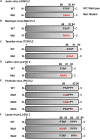
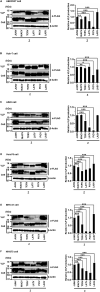
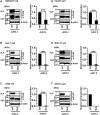
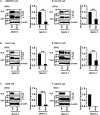
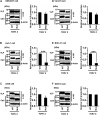
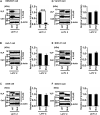
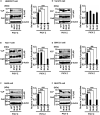
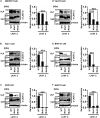
Similar articles
-
Highly Pathogenic New World and Old World Human Arenaviruses Induce Distinct Interferon Responses in Human Cells.J Virol. 2015 Jul;89(14):7079-88. doi: 10.1128/JVI.00526-15. Epub 2015 Apr 29. J Virol. 2015. PMID: 25926656 Free PMC article.
-
Lassa Virus, but Not Highly Pathogenic New World Arenaviruses, Restricts Immunostimulatory Double-Stranded RNA Accumulation during Infection.J Virol. 2020 Apr 16;94(9):e02006-19. doi: 10.1128/JVI.02006-19. Print 2020 Apr 16. J Virol. 2020. PMID: 32051278 Free PMC article.
-
Highly Pathogenic New World Arenavirus Infection Activates the Pattern Recognition Receptor Protein Kinase R without Attenuating Virus Replication in Human Cells.J Virol. 2017 Sep 27;91(20):e01090-17. doi: 10.1128/JVI.01090-17. Print 2017 Oct 15. J Virol. 2017. PMID: 28794024 Free PMC article.
-
Cell entry by human pathogenic arenaviruses.Cell Microbiol. 2008 Apr;10(4):828-35. doi: 10.1111/j.1462-5822.2007.01113.x. Epub 2007 Dec 21. Cell Microbiol. 2008. PMID: 18182084 Review.
-
Novel strategies for development of hemorrhagic fever arenavirus live-attenuated vaccines.Expert Rev Vaccines. 2016 Sep;15(9):1113-21. doi: 10.1080/14760584.2016.1182024. Epub 2016 May 13. Expert Rev Vaccines. 2016. PMID: 27118328 Free PMC article. Review.
Cited by
-
Exosomal transmission of viruses, a two-edged biological sword.Cell Commun Signal. 2023 Jan 23;21(1):19. doi: 10.1186/s12964-022-01037-5. Cell Commun Signal. 2023. PMID: 36691072 Free PMC article. Review.
-
A Review Study of the Participation of Late Domains in Sorting and Transport of Viral Factors to Exosomes.Life (Basel). 2023 Aug 31;13(9):1842. doi: 10.3390/life13091842. Life (Basel). 2023. PMID: 37763246 Free PMC article. Review.
-
The Virus-Host Interplay in Junín Mammarenavirus Infection.Viruses. 2022 May 24;14(6):1134. doi: 10.3390/v14061134. Viruses. 2022. PMID: 35746604 Free PMC article. Review.
References
-
- Buchmeier M. J., Peters C. J., de la Torre J. C. (2007). Arenaviridae: the virus and their replication. Fiel. Virol. 2 1792–1827.
LinkOut - more resources
Full Text Sources

